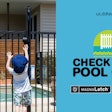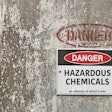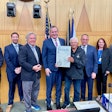
With the tragic drowning death of Graeme Baker in June of 2002, pool and spa safety issues hit the spotlight in a big way. A granddaughter of former Secretary of State James Baker, the 7-year-old was the victim of suction entrapment at a family graduation party. Since her death, the Baker family has strongly advocated for pool safety, including testifying in May 2006 before a Senate subcommittee in support of congressional action on pool and spa safety. With the recent changing of the guard in Congress, what can the pool and spa industry expect regarding legislation of this type. States such as California also deal with safety legislation on a regular basis, including recently amended double-barrier legislation. The industry has struggled for years with a bad rap when it comes to safety, something that both the APSP and individual manufacturers have recently gone out of their way to address and change for the better.
A Whole New Ballgame
Last May, two pieces of legislation were introduced — former Senator George Allen's (R-Va.) Pool and Spa Safety bill in the Senate, as well as a nearly identical one in the House, sponsored by Congresswoman Debbie Wasserman Schultz (D-Fla.) With both Sen. Allen's defeat and the end of the 109th Congress in December 2006, the future of a safety bill is up in the air. The Allen version was voted on in the waning hours of Congress and passed the Senate, but failed to achieve the necessary majority in the House. "It was actually the second to last bill voted on, at about 2:53 a.m., so it occurred on a Saturday," says Jonathan Beeton, communications director for Wasserman Schultz. "It failed; however, it got more yeas than nays, but because it was being pushed through at the last minute, it was what is called a suspension of the rules, which allows the bill to go through in a special way, but because it's going through in that way, it needs of a majority. It got like 191 in favor, but the nays were about 118, I think, so many more members of Congress voted yes to pass the bill than voted against it."
So what now? "Any bills that don't pass by the end of a Congress expire, and they have to be reintroduced," says Beeton.
Industry Perspective
The industry, as represented by the APSP, was 100 percent in support of the Allen bill, according to Bill Weber, president and CEO of the association. "We were supporting the legislation because we're supporting anything that has the effect of highlighting the need for the safe use of pools and hot tubs," he says. "There were some very reasonable provisions in there that relate back to our standard, the ANSI-7 standard on anti-suction entrapment that was approved by ANSI in October. The beauty of the Allen bill is that it called for states to enact certain guidelines and rules affecting pool safety, and any one of them could have simply adopted the ANSI-7 standard and been in compliance with the bill.
"The whole idea of having these standards is to get them in effect, primarily at all the state and local jurisdictions. And that's really what the effect of the Allen bill was."
With the change in Congress, though, the industry is left wondering for now. "It's a huge difference now because, moving from Republicancontrolled to Democratic-controlled, you have a whole new cast of characters that are in positions of influence that weren't before," says Weber.
"We're assuming that Congresswoman Wasserman Schultz continues to have an interest in the legislation, as do we. It's kind of a blank slate at the moment in the Senate in terms of who might be in a position to pick up where the Senate bill left off in Sen. Allen's absence."
For those unfamiliar with the bills in their original incarnations, they were nearly identical, though the APSP had concerns about Wasserman Schultz version because of its narrow scope. "I think the only issue that may be relevant here is to what degree fencing is mandated as opposed to [being] treated as an acceptable layer of protection. If it's a matter of mandating that certain types of fencing be required at all pools, it's not appropriate to all pool settings, but as is contained in the Florida law even, it's not mandated, it's simply an option," says Weber. The industry also expressed concern over specifically mandating the suction-valve release system, or SVRS, into law. "The SVRS, even in our own standard, is recognized as a perfectly appropriate option," says Weber. "The real issue is whether it's treated as an option or it's mandated. The standard I just referred to is the result of a process of a lot of people who are experts in the field. Our standard provides for the SVRS. We're not against the SVRS at all; it's a perfectly appropriate tool, but it's not a perfect tool, and it doesn't prevent entrapment in all instances, and it's not the only tool."
Beeton says that in the new Congress, his boss would like to see a version of her bill reintroduced. "What we'd like to push forward is obviously our bill, the Wasserman Schultz bill, and introduce that and find Democrats on the Senate side to introduce the same bill," he says. "Now, there were some changes, some differences between the two pieces of legislation, and hopefully those can be ironed out between the Senate and the House side, and we can get one bill, because that's always easier, but if we can't, then we can do a parallel introduction like we did before."
And as for the issues the APSP had with the bill? "We obviously felt strongly about that provision, and that's why we introduced that, and I don't think that anything has changed about the way the congresswoman feels about the legislation," says Beeton. "So I imagine that her goal will be to introduce those measures and have those measures included in the new bill."
On The Same Side
In the past, there has been a widespread perception that the pool industry is opposed to safety measures, due largely to concerns over cost of implementation. While the APSP says it was never true, the association has nonetheless gone to great pains to make clear its overall position on the importance of pool safety.
"I think there's only a change in perception," says Weber. "In the world of regulation, generally, there's kind of a rule of reason that has to be followed, and that's all we're really trying to do here, is say, 'Look, pools and hot tubs are a source of enjoyment, they're a source of recreation, they're a source of good health and fitness.'" says Weber. "And this is exactly what the ANSI-7 standard is designed to do — there are a variety of things that people can do to protect themselves against untoward incidents in and around water, and this is just the latest iteration of a standard that has been in effect back to the mid-1980s."
According to Don Burns, president of California's Spa and Pool Industry Education Council (SPEC), an attitude among pool dealers that contributed to a negative public perception has undergone a sea change. "Within the industry itself, there was a problem trying to get the salespeople to realize that this wasn't the way to kill the sale of a pool, to mention that since you have small children, you have to be careful," he says. "That, as it turns out, is a selling point today, where 25 years ago it was regarded as death to a sale. Everybody has changed for the better in that regard. We've learned that if you have children, the best thing to do is take the safety issue, bring it to the fore real fast, and deal with it by talking about the various ways of meeting the needs of the law."
Both Burns and Weber emphasized the familiar adage that the most important factor in pool safety is adult supervision, but legislation as a means to address safety will be around for a while, everyone agrees. "The fact is that I think the regulatory approach is here to stay; it's not going to go away; it's embedded in the uniform building code; it has a very strong impact on local governments adopting the regulations," says Burns.
Addressing The Issue
Other than relying on legislation, the industry has actively undertaken various methods of addressing safety and bringing it to consumers' attention.
"We have a lot of safety publications; we have on our various Web sites an emphasis on safety; we've got specific Web sites devoted to consumers; we've got ones devoted to safety for children," says Weber. "We have a number of publications that talk about the proper way of precluding any accidents and promoting safety in and around pools and spas. We have public safety announcements in various media markets and then, in addition to that, there's a lot of it that goes on not just from APSP itself, but also among our member companies. A lot of the large manufacturers, for example, have significant safety campaigns of their own. So it's not just us; it's us and all of the efforts that are undertaken vis-a-vis the members of our association."
Campaigns are going on at the state level, as well. "In California with SPEC, we have run a safety campaign every spring and run it through the summer," says Burns. "The very first item on [safety] tips for homeowners on our Web site is done by manufacturers, builders, associations.
"The national association has been very instrumental in pushing for safety campaigns. The local APSP is running safety campaigns. It's not 100 percent, but whenever they run a new one, it's one more that wasn't there last year, and they continue to feed upon themselves."
What The Future Holds
With a new two-year session of Congress underway as of Jan. 4, the industry expressed hope that both sides could come together to address the mutual goal: safety. "We made the point, and I think it needs to be emphasized — it stands to reason that safety is a core value of this industry. Where would we be without it?" says Weber.
Beeton concurs, adding, "The pool and spa industry was at the press conference that we did with Sen. Allen in Washington, D.C., and we were very pleased to see that. We would rather work with the industry than against them."


































